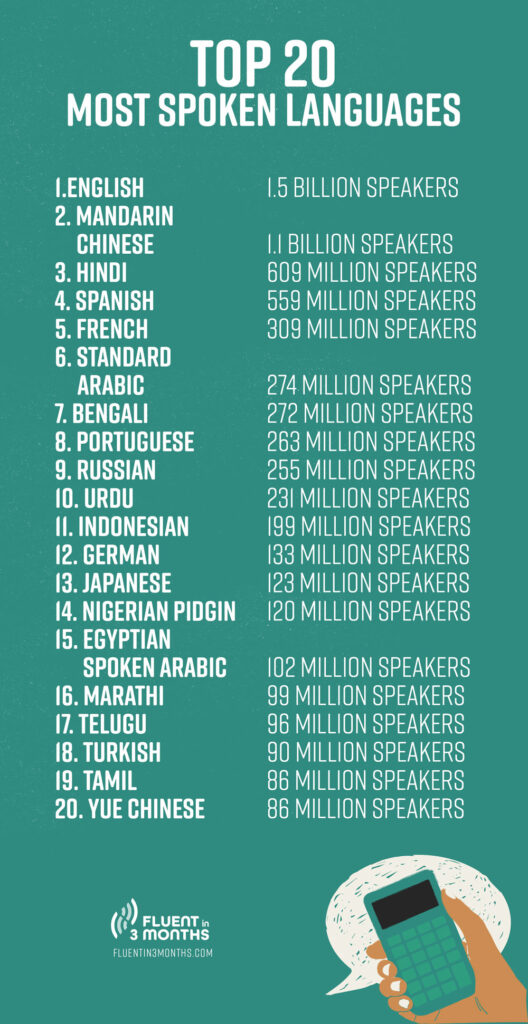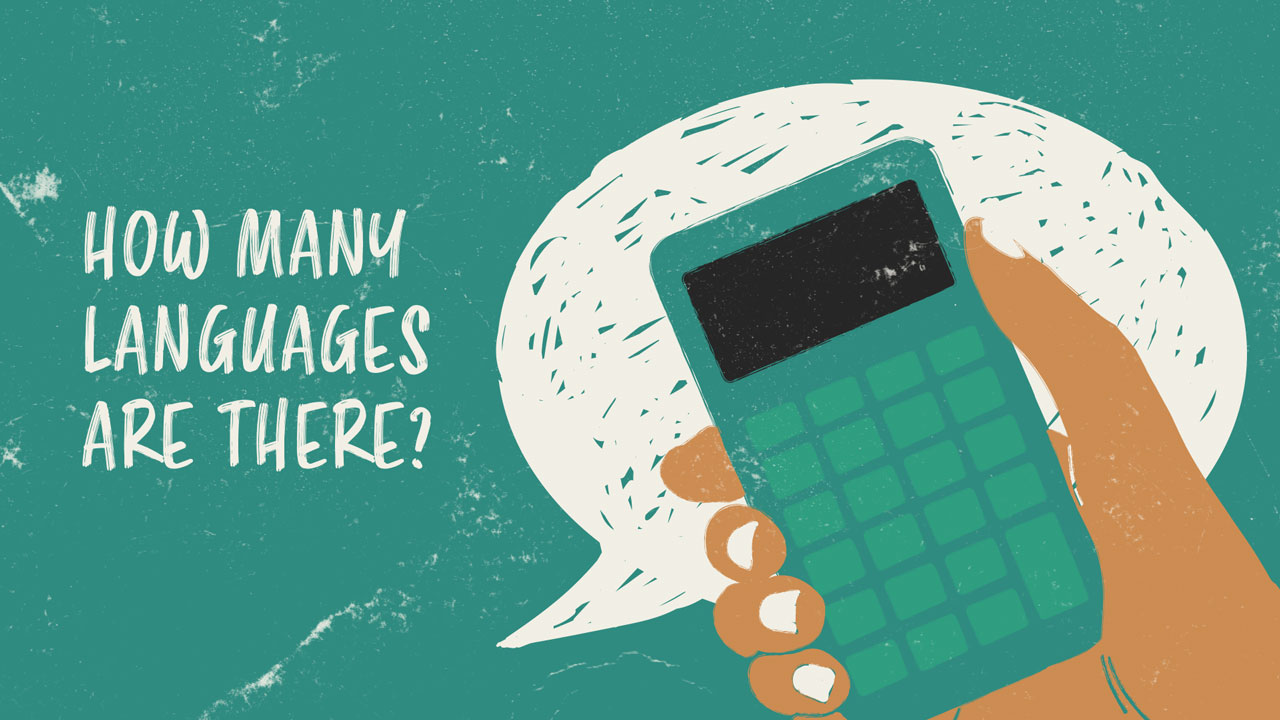How Many Languages Are There in the World?
How many languages are there? Today, there are over 7,000 active languages around the world. But in all of history, linguists think people have spoken some 31,000 different languages. That means a lot of languages have disappeared. And they still do.
Languages change all the time. New ones appear. Some rare ones disappear. Dialects of the same language develop. People move away, and their children acquire the new language better than their parents’ language. All these show us why languages don’t stand still.
Language acquisition was one of my university modules back when I was studying languages. I found it fascinating how we all acquire languages in different ways. I still do. The answer to “how many languages are there” is often “well, it depends.” In this article, I’ll talk about why it’s a tricky question.
Table of contents
The Challenge of Counting How Many Languages There Are
Why is it so hard to agree on how many languages there are? One reason is that what counts as a language can be a matter of opinion. Some linguists consider lexical and grammatical information while others take social, cultural, or political factors into account.
Another reason is that there are more than 3,000 endangered languages in the world. This accounts for nearly 40% of the world’s languages. In addition to this, over 1,400 languages have less than 1,000 first-language speakers, 422 have less than 100 speakers, and 117 have less than 10 speakers.
Language and Dialect: What’s the Difference When Counting Languages?
As linguist Max Weinreich’s famous saying goes, “a language is a dialect with an army and a navy.” Weinreich’s work focused on raising awareness on Yiddish, a language spoken by Ashkenazic Jews. This language was spoken across several countries, and ended up developing its own dialects — known today as Eastern and Western Yiddish.
What makes a language a language, and not just a dialect? According to the dictionary definitions, language is a system of communication with its own set of rules for grammar, vocabulary, and pronunciation. A dialect, on the other hand, is a version of a language that is specific to a region or group of people. It may have different words, accents, or ways of saying things, but generally, speakers of different dialects of the same language can understand each other.
Let’s look at where I’m from: Cyprus. We have two languages, Turkish and Greek. We understand Turkish from Turkey, and Greek from Greece but speak with our Cypriot dialects. People from Turkey and Greece can mostly understand the Cypriot dialect, although it’s not very straightforward.
Over the years, Cypriot Turkish and Cypriot Greek developed their own vocabulary within the Turkish and Greek languages. For example, in Cypriot Turkish, we call the asparagus plant ayrelli. In Standard Turkish it’s kuşkonmaz, and in Cypriot Greek agrellia.
Most Spoken Languages and the Global Linguistic Landscape
23 languages make up for the language of more than half of the world’s population. So this means that millions or billions of people speak these languages. Among them are English, Mandarin Chinese, and Spanish.
There are several reasons why these languages are so popular. Spanish, for example, is the official language in 20 countries, including Spain and many Latin American countries. China has a population of over one billion, meaning that billions of people speak Mandarin Chinese as their first language.
Some languages are ‘lingua francas,’ serving as a bridge between different languages. English is a common one. Over a billion people around the world speak English but most are non-native speakers. A global language, it’s often the communication language of two people who don’t speak the same language. According to English First’s English Proficiency Index, more than 60 countries have at least moderate English proficiency. The Netherlands, Singapore, and Austria rank the highest in English proficiency as non-native speakers. So if a Dutch-speaker from the Netherlands met a Mandarin-speaker from Singapore, they’d most likely have no communication problems speaking English.
Other languages may serve as the lingua franca within a country — take Nigeria as an example, where there are over 500 living languages. The lingua franca of Nigeria is both English and Nigerian Pidgin, an English-based creole. Ethnologue’s 2023 data shows that there are more than 100 million speakers of Nigerian Pidgin alone, making it one of the most spoken languages worldwide.
So how about the other most common languages? Here are the top 20:
- English – 1.5 billion speakers
- Mandarin Chinese – 1.1 billion speakers
- Hindi – 609 million speakers
- Spanish – 559 million speakers
- French – 309 million speakers
- Standard Arabic – 274 million speakers
- Bengali – 272 million speakers
- Portuguese – 263 million speakers
- Russian – 255 million speakers
- Urdu – 231 million speakers
- Indonesian – 199 million speakers
- German – 133 million speakers
- Japanese – 123 million speakers
- Nigerian Pidgin – 120 million speakers
- Egyptian Spoken Arabic – 102 million speakers
- Marathi – 99 million speakers
- Telugu – 96 million speakers
- Turkish – 90 million speakers
- Tamil – 86 million speakers
- Yue Chinese – 86 million speakers

What Puts a Language in Danger?
When the last speaker of a language dies, the language dies too. This is what we call ‘language death’, and it’s happening more than you might think. Why? There are many reasons. Young people might stop learning their ancestors’ language because a more widely spoken language might offer better job chances or they don’t have a connection with the country anymore. Or, a community could lose its language if its speakers move to cities where another language is spoken.
UNESCO has a project called Atlas of the World’s Languages in Danger, showing the degree of endangerment of a language. These degrees are safe, vulnerable, definitely endangered, critically endangered, and extinct. At least 43% of the world’s languages have some degree of endangerment. Example languages include Bashkarik in Pakistan (severely endangered), Apinajé in Brazil (vulnerable), Emilian-Romagnol in Italy (definitely endangered), and more.
Languages and Their Online Presence
Not all languages are equally online. Some don’t have websites, apps, or keyboards, making it difficult to use them on the internet. Only a few hundred languages are well-represented online, even though there are thousands spoken around the world.
Having your language online means you can use it to read the news, chat with friends, or watch series. It also makes it more interesting for young people to learn it, which guarantees the future of the language — at least for some time.
There’s still work to be done to bring more languages online — Apple only introduced an Urdu language keyboard for iOS devices in 2013, for example.
So, How Many Languages Are There?
There’s no single number that tells the whole story. Although there are over 7,000 languages in the world, about 97% of the world’s population speak only 4% of these languages! Studies on endangered languages are so valuable, since preserving a language often means preserving a culture as



Social